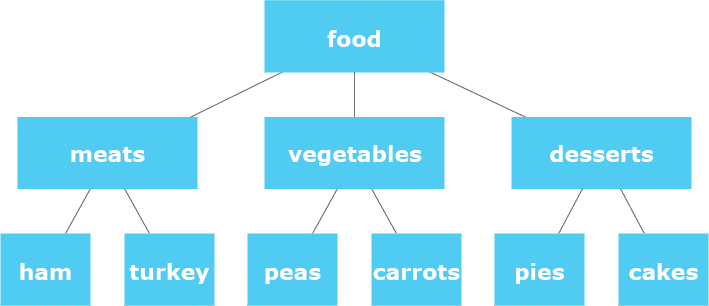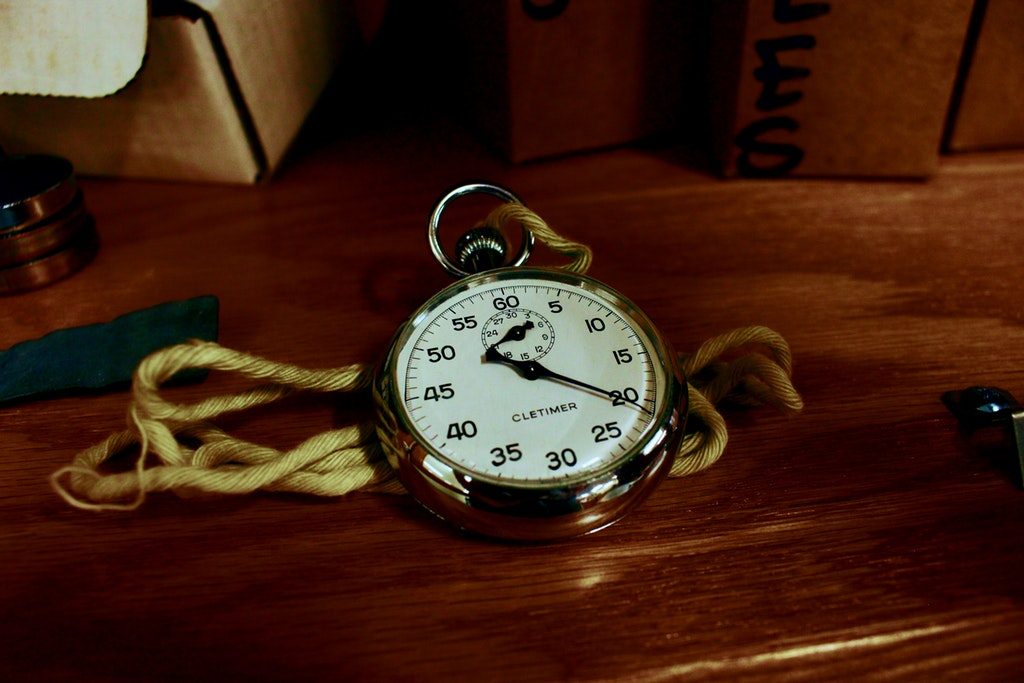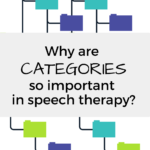The Importance of Categories
4 min read
Categorization is the process in which ideas and objects are recognized, differentiated, and understood. Categorization implies that objects are grouped into categories, usually for some specific purpose. Ideally, a category illuminates a relationship between objects. Categorization is fundamental in language, prediction, inference, decision-making and in all kinds of environmental interaction. – Wikipedia
We use categories to organize our world and our thoughts. The aisles of a grocery store, the clothes in our closets, and the books in the library are all arranged and sorted based on categories. Our ability to understand and navigate these categories makes it easy to find what we’re looking for more efficiently.
Similarly, we store words in our brain using categories. Networks of meaning link concepts with shared features. When one network is activated, the words linked along it are more quickly understood and produced. In a brain that is damaged, these networks may be broken, slowing thought, speech, and comprehension.
Learn Something New with Categories
Categories not only help us to process information, they also help us to learn, remember, and integrate new information. A new person we meet may be categorized in the brain according to where we met, the role they play, or who introduced us.

We learn new words by inferring the part of speech and the meaning through context, then integrating the words into our mental network with connections to synonyms, antonyms, and related concepts. When we go back to retrieve these words, we may first access the category before honing in on the exact concept or name.
When Categories Fail
People who have difficulty speaking often have trouble with categories. They may struggle to see how items are connected, and without this connection, they have more difficulty finding the word they are looking for. Unfortunately, many of the assistive devices that have been designed for people with aphasia rely on category-based grids of words. These Augmentative & Alternative Communication (AAC) apps organize words into categories such as ‘Food,’ ‘Feelings,’ and ‘Basic Needs’ and then expect the user to find the right word by navigating to it.
If we want a person with aphasia to use such a communication system, we must first make sure that the person understands that ‘happy’ is a feeling and ‘hot dog’ is a food. This seems intuitive, but a damaged brain does not work the way a healthy one does. Assessing and treating the ability to find members of a given category and classify given items as belonging to a particular category is an important step in the speech therapy process.
Verbal Fluency of Categories
In more advanced processing of categories, it can be valuable to not only identify the category, but also to generate other members belonging to that category. This is called generative or divergent naming. The ability to fluently list members of a category is a common diagnostic tool of brain health. Clinicians ask patients to name all the animals they can in one minute, and compare the results to norms of the general and impaired population. This is a test of verbal fluency.

Go ahead – try it!
How many animals can you name in 60 seconds?
How did you do?
A typical range is 15-20, but this changes based on gender, education, and age.
What strategies did you use?
Did you start with cat and dog, then perhaps name a few more pets before moving on to horse, cow, and other farm animals? If you did something similar, you were using a subcategory search strategy within the parent category of animals. Pets, farm animals, zoo animals, forest animals, reptiles, birds, sea animals, etc. This is a very efficient strategy, and one that may need to be relearned after a stroke.
This test, called a semantic fluency test, is included in the Advanced Naming Therapy app. Email the results to see published norms for comparison. The app also includes a phonemic fluency test of words that start with F, A, and S.
Therapy for Categories
Here are some common speech therapy exercises that can help reinforce the concepts of categories:
- Name the category. Ex: What category does ‘dog’ belong to?
- Find the category member. Ex: Which one is an animal? Dog, rock, or apple?
- Name one more in an unstated category. Ex: Dog, horse, lion. What’s one more?
- Find the one that doesn’t belong in an unstated category. Ex: Which one doesn’t belong? Dog, horse, lion, apple?
- Name 5 category members. Ex: Name 5 types of fruit.
- Name a category member that begins with a certain letter. Ex: Name a fruit that starts with A.
Tactus Apps can help
Category Therapy
Strengthen connections between words with flexible exercises to improve language and reasoning skills.
Category Therapy, a professional speech therapy app, allows for unlimited practice of 70 categories in 3 levels of difficulty across 4 activities to strengthen categorization skills essential for everyday life.
Advanced Naming Therapy
Express yourself better with challenging word-finding exercises for aphasia and cognitive-communication problems.
Advanced Naming Therapy also includes a fun category generation exercise. It includes over 200 categories and constraints with a count-down timer, adjustable target number, and on-screen audio recording.

